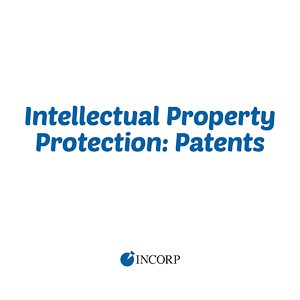Stay in the know!
Join our newsletter for special offers.
Back to Protecting Your Intellectual Property - Part 1
As we explained in Part 1 of this article, your business assets include certain intangibles that are collectively called "intellectual property." Generally speaking, intellectual property is any creative work, including printed and digital materials, websites and movies, brands, and logos. These types of works can be protected by trademarks and copyrights. Intellectual property also includes inventions, which can be protected by a patent.
According to the U.S. Patent and Trademark Office (USPTO), "A patent for an invention is a grant of property rights by the U.S. Government through the U.S. Patent and Trademark Office. The patent grant excludes others from making, using, or selling the invention in the United States."*
Most patents are utility patents, granted either for a new process, machine, or manufactured product, or an improvement to an existing process, machine, or product. A design patent can be granted for a new product design, and a plant patent protects new varieties of plants created by scientists.
Most small businesses won't need patent protection, but it's best to know the basics so you can decide whether your company might be the exception to the rule. First of all, an idea or concept can't be patented — patents are only granted for products and processes that are tangible, presented in detail, and explained in clear and definite terms.
If you've invented a better mousetrap, cat toy, or tomato slicer, your first instinct may be to rush out and get it patented so no one else can steal your idea. Experts suggest that getting a patent should actually be the last step in a lengthy process that starts with making sure your product is marketable on a large scale. Selling it successfully at the local swap meet or farmer's market isn't a guarantee that it will make enough money from sales to justify the expense of a patent, which can cost upwards of $25,000.
Although you and your friends may agree that your invention will become the next huge national fad, it would still be wise to consult with a disinterested third party to make sure your idea is viable, considering the costs of production, marketing, legal fees, etc. Check with inventors groups or ask your local office of the Small Business Administration to recommend a reputable company in your area that can conduct a market feasibility study.
It's a viable idea — now what? If you decide to pursue a patent, the first step is to conduct a preliminary patent search on the USPTO website. This will not only tell you if someone else has already patented your idea, but will also give you a good idea of what similar products have been patented, what they look like, etc. Searching is free, and the USPTO provides a video to guide you step-step through the process.
If a preliminary search shows that no other company has applied for, or been granted, a patent for a product like yours, the next step should be to contact an attorney who specializes in patents so they can help you complete the application process. While you could do it yourself, you'll have a much better chance of success with an experienced professional who knows all the rules, regulations, and procedures. A patent attorney can do a more thorough search to make sure you haven't missed anything, and can also make sure all the federal government forms are filled out correctly. For information on registered patent attorneys and agents in your area, visit the USPTO's Office of Enrollment and Discipline Website.
Beware of companies claiming they'll help you patent your invention. While many are legitimate, this field is known for attracting scam artists who take advantage of inventors by collecting fees for services that are never delivered. This is such a widespread practice that the USPTO has set up a web page with guidelines to help protect inventors.
With so many companies developing new inventions, there may be disputes as to who invented a new product or process first. Until recently, companies could prove their invention date by providing worksheets, preliminary test results, or proof of product sales. But in 2013, the USPTO adopted a new system in which the first inventor to file a patent application gets the patent in case of a dispute.
Since the formal process of applying for a patent may take several months, many companies now decide to file a provisional patent application (PPA) as soon as they are ready to market their product. The PPA, a short document describing the product and its use, can be used to establish a filing date for your invention, and it costs only a few hundred dollars to file. You'll then have 12 months to file a formal application. In the meanwhile, you can use the term "patent pending" on your product, which may scare away copycats.
The USPTO has a wealth of information about patents on its website (see just a few of these resources below), so before taking any action, it would be a good investment of your time to research all your options. By taking advantage of online information and professional advice, you should be able to find the best way to protect your intellectual property.
Related Articles and Services:
Join our newsletter for special offers.
